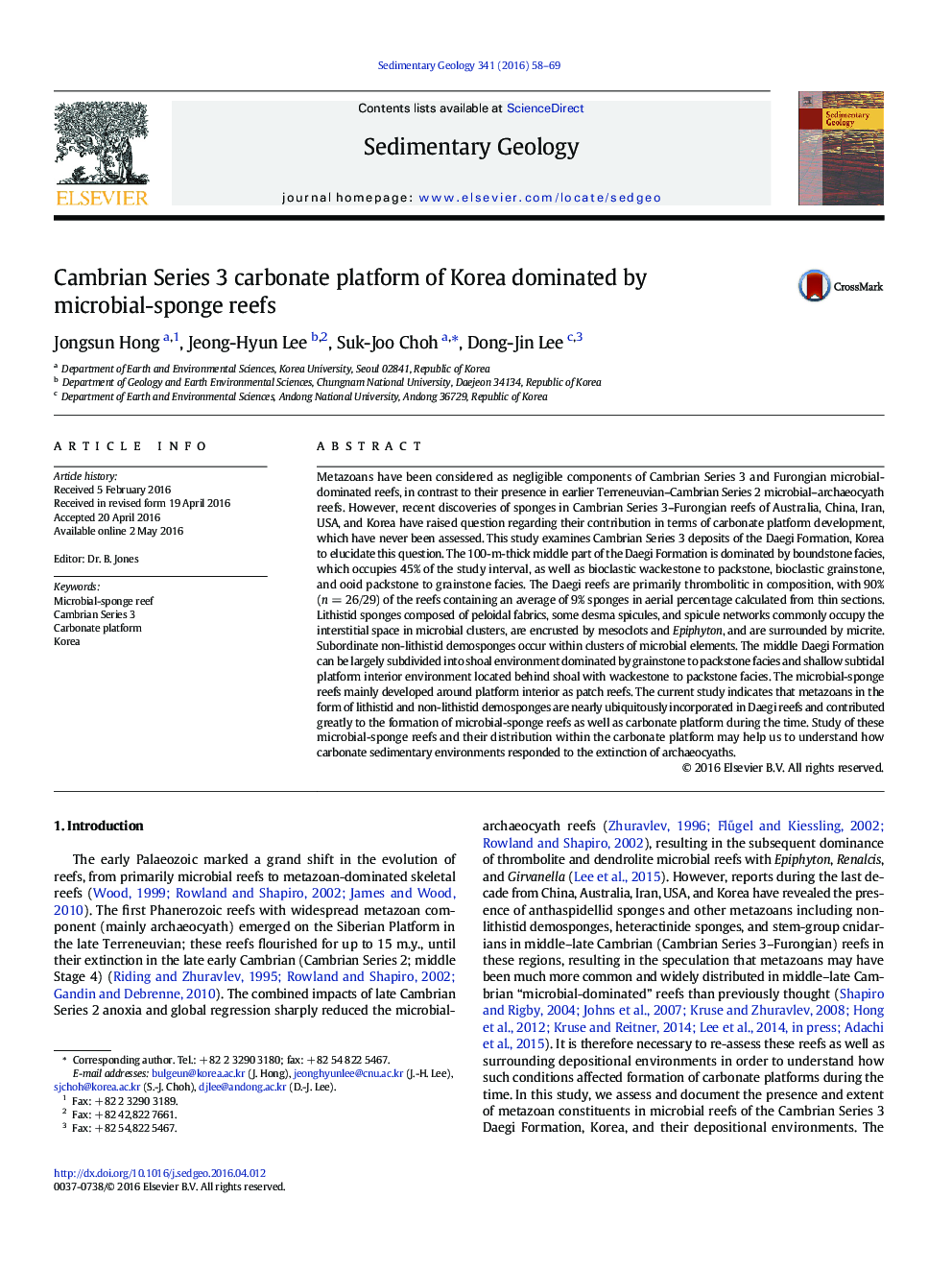| کد مقاله | کد نشریه | سال انتشار | مقاله انگلیسی | نسخه تمام متن |
|---|---|---|---|---|
| 4689004 | 1636022 | 2016 | 12 صفحه PDF | دانلود رایگان |
• Cambrian Series 3 inner platform carbonate succession from Korea dominated by thrombolitic reefs
• 90% of thrombolitic reefs contain 9% of lithistids and minor non-lithistid sponges
• Sponges contributed greatly to the formation of microbial reefs and carbonate platform.
Metazoans have been considered as negligible components of Cambrian Series 3 and Furongian microbial-dominated reefs, in contrast to their presence in earlier Terreneuvian–Cambrian Series 2 microbial–archaeocyath reefs. However, recent discoveries of sponges in Cambrian Series 3–Furongian reefs of Australia, China, Iran, USA, and Korea have raised question regarding their contribution in terms of carbonate platform development, which have never been assessed. This study examines Cambrian Series 3 deposits of the Daegi Formation, Korea to elucidate this question. The 100-m-thick middle part of the Daegi Formation is dominated by boundstone facies, which occupies 45% of the study interval, as well as bioclastic wackestone to packstone, bioclastic grainstone, and ooid packstone to grainstone facies. The Daegi reefs are primarily thrombolitic in composition, with 90% (n = 26/29) of the reefs containing an average of 9% sponges in aerial percentage calculated from thin sections. Lithistid sponges composed of peloidal fabrics, some desma spicules, and spicule networks commonly occupy the interstitial space in microbial clusters, are encrusted by mesoclots and Epiphyton, and are surrounded by micrite. Subordinate non-lithistid demosponges occur within clusters of microbial elements. The middle Daegi Formation can be largely subdivided into shoal environment dominated by grainstone to packstone facies and shallow subtidal platform interior environment located behind shoal with wackestone to packstone facies. The microbial-sponge reefs mainly developed around platform interior as patch reefs. The current study indicates that metazoans in the form of lithistid and non-lithistid demosponges are nearly ubiquitously incorporated in Daegi reefs and contributed greatly to the formation of microbial-sponge reefs as well as carbonate platform during the time. Study of these microbial-sponge reefs and their distribution within the carbonate platform may help us to understand how carbonate sedimentary environments responded to the extinction of archaeocyaths.
Journal: Sedimentary Geology - Volume 341, 15 July 2016, Pages 58–69
